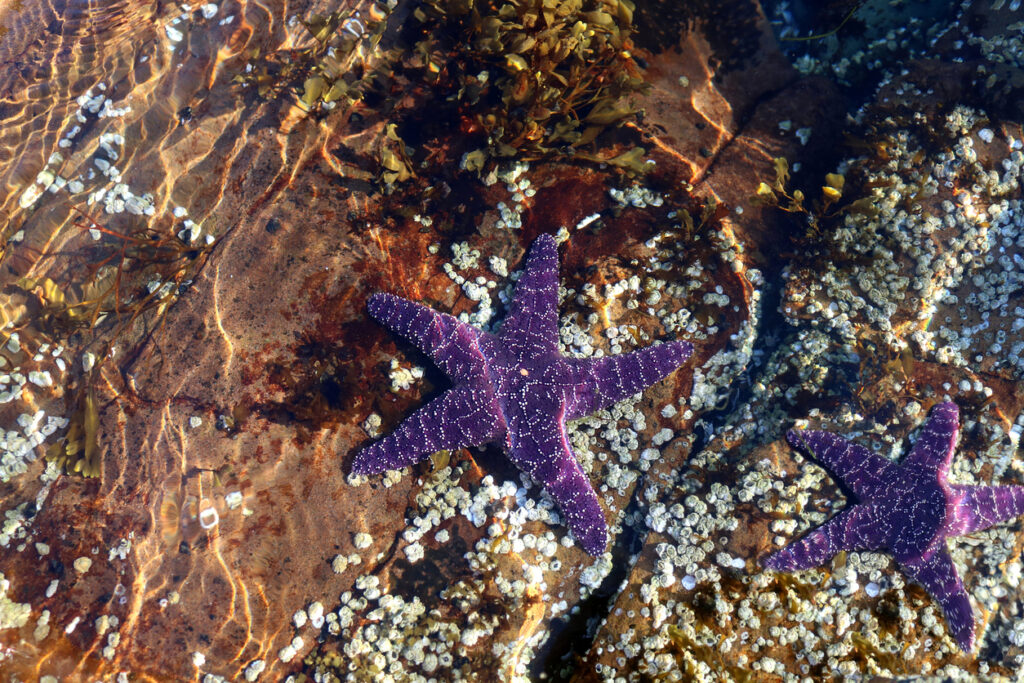Starfish, also known as sea stars, can be found by the plenty along British Columbia’s coast. BC was the first place I ever had the chance to see a sea star and they are an incredible sea creature.
In 2013, a disease, called sea star wasting syndrome, struck along the Pacific coast from Mexico’s Baja California peninsula to Alaska, decimating millions of sea stars. Sea stars are slowly making a comeback, but the sunflower sea star, in particular, was hit hard and scientists are pushing for this species to be listed as endangered so more can be done to bring the species back from the brink of extinction. Sunflower sea stars are important when it comes to maintaining a healthy marine ecosystem, as they are natural predators of sea urchins, which feed on kelp and other vegetation. Healthy kelp provides habitat and food for a wide variety of marine species and sea urchins can decimate kelp if left unchecked.
There are over 2,000 different species of sea stars, scientifically known as echinoderms, and over 140 of those live along the Pacific coast of North America, from Northern California up to southeast Alaska.
According to the website Sea Stars Of The Pacific Northwest, sea stars roam the intertidal and subtidal zone and consume every type of prey, including sponges, snails, clams, mussels, barnacles, sea cucumbers, tunicates, tube worms, sea pens, anemones, gorgonian corals, scallops, fish and even each other. Sea stars have few natural enemies.
In an article about sea stars facts, the Pacific Beach Coalition reports that sea stars eat their food inside out: “When they capture prey, they [sea stars] have tiny suction cups to grab ahold of their food. Then their stomach exits their mouth to digest the food and reenters the body when they’re done eating.”

With no brain, no blood and the ability (albeit slowly) to regenerate a lost limb, sea stars are fascinating creatures. They filter sea water through their nervous system to get the nutrients they need to survive, and therefore cannot live in freshwater environments. And while many have five arms, some species of sea stars can have up to 40!
Sea stars come in a wide variety of colours, from yellow to purple and more. At https://www.seastarsofthepacificnorthwest.info/species.html, the author profiles 30 different species of sea stars found along the Pacific Northwest and includes photos.
Near the end of winter, beginning spring is spawning time for many species of sea stars. The best time to view them is during low tide and you can find them in rocky areas just below sea level, such as tide pools. Some examples of places to find sea stars around Vancouver include Crescent Beach, Belcarra Regional Park (Picnic Area Beach and Jug Island), Barney Marine Park, Cates Park and Deep Cove. If you see a sea star, do not touch it. Sea stars get their oxygen from the ocean and removing them can kill them. Sunscreen and the oils from your skin can also harm them if you touch them. It’s best to leave them be and just observe them.

